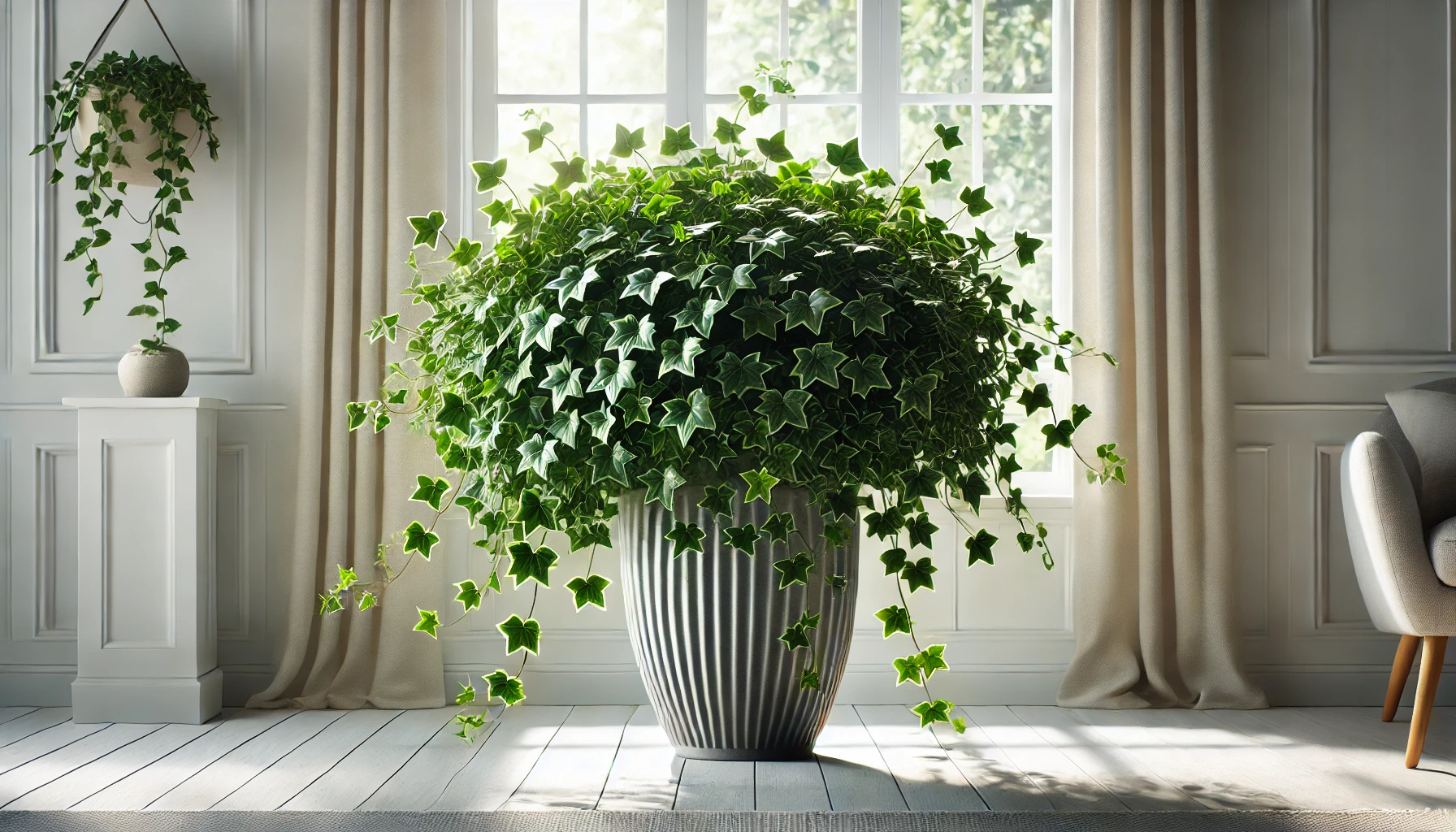
English Ivy, scientifically known as Hedera helix, is a versatile and popular plant known for its lush, trailing vines and distinctive, lobed leaves. It can add a touch of elegance to any indoor or outdoor space. English Ivy can grow quite extensively, with vines reaching lengths of up to 50 feet in ideal conditions, making it perfect for hanging baskets, climbing trellises, or as ground cover.
A Rich History and Ideal Growing Conditions
Native to Europe and Western Asia, English Ivy has been cultivated for centuries for its ornamental and practical uses. It has become a symbol of fidelity and eternal life in various cultures. English Ivy thrives in a variety of environments but prefers cool, shaded areas with well-draining soil. It grows best in temperate climates and can be found thriving in both indoor and outdoor settings.
English Ivy and Pets: Important Information
While English Ivy is a beautiful and resilient plant, it is important to note that it is toxic to pets. If ingested by cats or dogs, it can cause vomiting, diarrhea, and abdominal pain. To keep your furry friends safe, ensure that your English Ivy is placed out of their reach.
Best Practices for Caring for Your English Ivy
Caring for English Ivy is relatively easy, making it a great choice for both novice and experienced plant enthusiasts.
Watering and Humidity
English Ivy prefers consistently moist soil but does not like to sit in water. Water the plant thoroughly when the top inch of soil feels dry, and ensure that excess water drains out of the pot to prevent root rot. In general, watering once a week is a good starting point, but you may need to adjust based on your specific environment. English Ivy appreciates higher humidity levels. If your home is dry, consider using a humidifier or misting the leaves regularly to increase humidity around the plant.
Soil, Light, and Temperature
A well-draining potting mix is essential for English Ivy. They grow best in bright, indirect light but can also tolerate low light conditions. Place your plant near a window where it can receive plenty of light, but avoid direct sunlight, which can scorch the leaves. English Ivy prefers temperatures between 50°F and 70°F. They are relatively hardy but should be protected from extreme heat and cold drafts.
Common Problems and Remedies
Even with the best care, English Ivy can encounter some common issues. Yellowing leaves can be a sign of overwatering or poor drainage. To remedy this, ensure the soil is well-draining and adjust your watering schedule accordingly. Brown leaf tips can be caused by dry air or inconsistent watering. Increasing humidity around the plant and maintaining a regular watering schedule can help prevent this issue.
English Ivy can also be affected by pests such as spider mites, aphids, and scale. To combat these pests, use a water and mild soap solution or neem oil spray. Regularly inspecting your plant and wiping down the leaves can help prevent pest infestations.
Propagation and Benefits
Propagating English Ivy is relatively easy and can be done through stem cuttings. Cut a healthy stem with a few leaves and place it in water or moist soil to root. Before long, you’ll have new plants to share or add to your collection.
English Ivy is not only beautiful but also beneficial to your indoor environment. It helps purify the air by removing toxins such as formaldehyde and benzene, making it a healthy addition to your home.
Final Thoughts
English Ivy is one of the most versatile and easy-to-care-for plants you can find. Its lush, trailing vines and adaptability make it a favorite among plant enthusiasts and interior designers alike. While they do require some attention to thrive, the rewards are well worth the effort. With the right care, your English Ivy can become a stunning focal point in your home. So why not add an English Ivy to your collection and enjoy the beauty and benefits it brings?
Stay connected with the world of plants! Subscribe to Phylofy for expert gardening tips, DIY projects, and eco-friendly inspiration. Join our community and nurture your love for nature. Don’t miss exclusive content and updates. Subscribe now!



